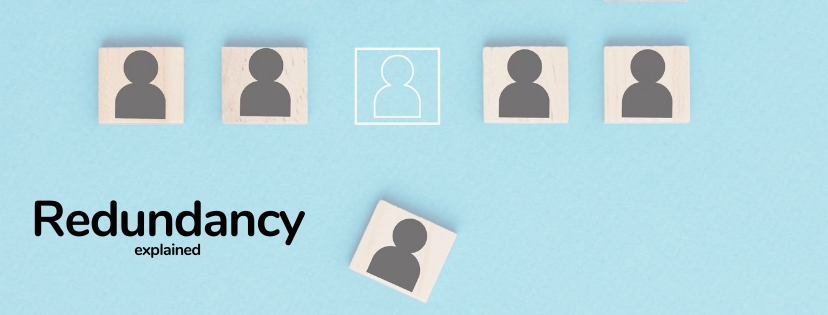Redundancy Pay If Company Goes Bust: Comprehending Your Entitlements in the UK
Redundancy Pay If Company Goes Bust: Comprehending Your Entitlements in the UK
Blog Article
Examining the Interaction Between Firm Redundancy and Organizational Flexibility for Future Development
In the dynamic landscape of today's service world, the elaborate connection between firm redundancy and business flexibility emerges as a vital factor for sustained growth and success. Companies commonly deal with the challenge of striking a delicate equilibrium in between maintaining a level of redundancy to reduce threats and cultivating adaptability to respond promptly to the ever-evolving market needs. This delicate interaction holds the crucial to not only making it through in turbulent times however also flourishing in the face of uncertainty. As we check out the diverse measurements of this interplay, interesting insights right into just how companies browse these intricacies to lead the way for future growth wait for.
Importance of Company Redundancy
Company redundancy is an essential element that improves business resilience and mitigates functional risks. By including redundancy steps within the organizational framework, companies can much better endure unforeseen interruptions and fluctuations in the company setting. Redundancy works as a calculated barrier, allowing business to adjust and respond properly to unanticipated challenges without compromising essential procedures.
One secret element of the relevance of firm redundancy is its role in making certain continuity during times of dilemma. When faced with unexpected adjustments or emergency situations, redundant systems, resources, or employees can action in to keep essential features and prevent extensive disruptions. This continuity not just safeguards the company's reputation and client trust but additionally minimizes financial losses and operational downtime.

Strategies for Organizational Adaptability

Creating versatile business frameworks that enable for fast changes to market characteristics and client requirements is crucial for remaining affordable in a swiftly advancing environment. By proactively identifying possible disturbances and opportunities, companies can proactively adjust and thrive in an ever-changing company landscape.
Harmonizing Redundancy and Flexibility
Achieving a harmonious equilibrium in between functional redundancy and business flexibility is vital in navigating the complexities of go to these guys a vibrant company atmosphere. Striking the best balance between redundancy and flexibility is a delicate procedure that calls for a deep understanding of the company's objectives, market characteristics, and danger resistance.
To achieve this equilibrium, business require to perform routine evaluations of their procedures to recognize areas where redundancy is required for risk mitigation and where flexibility can drive advancement and development. Implementing versatile structures, cultivating a culture of constant discovering and enhancement, and encouraging open interaction throughout all levels of the organization are crucial methods to balance redundancy and flexibility effectively. By aligning these 2 critical elements, firms can place themselves for lasting growth and success in an ever-changing service landscape.
Situation Studies on Adaptation Success
In examining instances of effective business adaptation, it becomes noticeable that the interaction in between operational redundancy and adaptability is a defining consider shaping resistant businesses. One compelling instance research study is that of Netflix. Initially a DVD rental solution, Netflix demonstrated exceptional adaptability by transitioning into a streaming system when digitalization disrupted the market. By purposefully investing in modern technology and content production, Netflix not only grew however made it through in a quickly progressing market. One more standout example is Amazon. Beginning as an on-line bookstore, Amazon constantly adjusted its service version, broadening right into diverse fields such as cloud computing and expert system. This versatility permitted Amazon to stay in advance of rivals and fulfill changing our website customer needs. Last but not least, Adobe offers a notable picture of successful adaptation. The business moved from marketing software licenses to a subscription-based model, ensuring repeating revenue streams and boosted client involvement. These study underscore the significance of functional redundancy coupled with business flexibility in cultivating long-term development and competitiveness.
Structure Strength for Future Development
Building resilience for future growth calls for a critical positioning of functional processes with market dynamics and emerging patterns. Business need to adjust to transforming atmospheres by promoting a society of versatility, technology, and continuous improvement. Resilience involves not just recuperating from obstacles but likewise proactively getting ready for future obstacles. One vital aspect of building resilience is purchasing robust risk monitoring approaches to alleviate prospective disruptions. This consists of circumstance preparation, expanding supply chains, and developing contingency strategies for various contingencies (who pays redundancy money).
Moreover, cultivating strong relationships with stakeholders, such as consumers, workers, vendors, and the area, is vital for maintaining and weathering uncertainties trust and support during stormy times. Efficient interaction and openness play a vital function in building durability, as they assist align expectations and assist in cooperation in navigating unpredictabilities.
Additionally, companies require to focus on discovering and advancement efforts to upskill employees and equip them with the required tools to adjust to altering scenarios. By spending in their workforce, firms can boost their adaptability and agility, eventually reinforcing their durability for lasting future growth.
Verdict

In the dynamic landscape of today's service globe, the detailed partnership between business redundancy and business adaptability emerges as an important aspect for continual growth and success. Companies typically encounter the difficulty of striking a delicate balance between preserving a degree of redundancy to minimize dangers and promoting versatility to respond swiftly to the ever-evolving market needs.To achieve this balance, business require to conduct normal analyses of their procedures to identify areas where redundancy is necessary for threat mitigation and where flexibility can drive technology and development.In verdict, the interplay in between business redundancy and organizational versatility is vital for future development. Building resilience via a combination of redundancy and adaptability will certainly guarantee that companies are prepared for the difficulties of the future.
Report this page